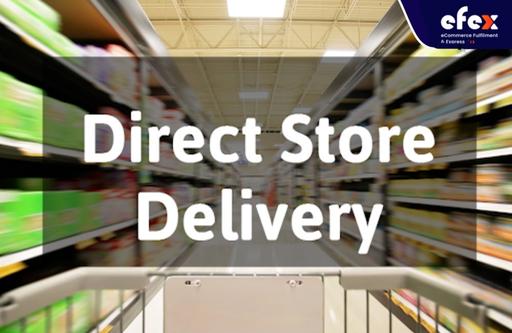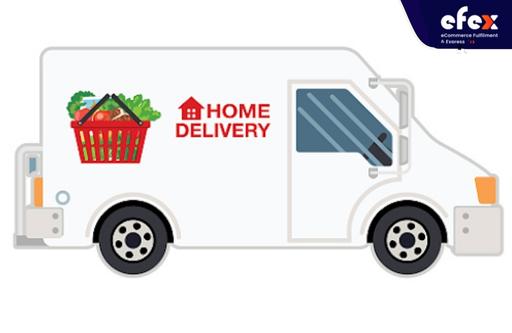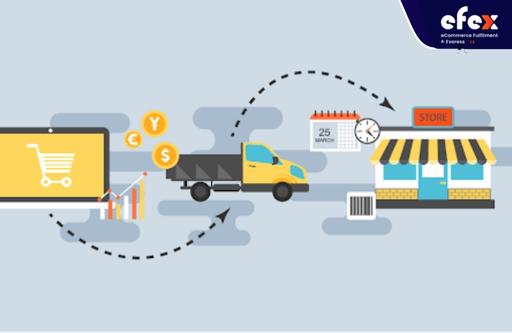
More Helpful Content
Your profit may suffer significantly if you don't have specific items shipped to your shop in time for certain sales periods. Along with losing out on a significant portion of sales, dissatisfied customers make them more likely to shop at a rival's store. Apples, for instance, must be transported in a cold chain since they are temperature & time sensitive.
What occurs when your apple truck is slowed down by traffic?
The planning process is further complicated by seasonal upturn and other items that could spike without warning. Surges can strain your distribution network to the point of collapse if you don't have a solid backup plan. In light of this, Direct Store Delivery (DSD) services will be able to provide a solution to this issue.
DSD, standing for Direct Store Delivery is the phrase describing a method of shipping goods from a vendor or distributor straight to a retail shop, avoiding a retailer's distribution center.

DSD products are frequently high-demand consumer goods including food, drinks, personal care items, and natural gas and oil. DSD is a crucial channel in the grocery sector because it not only vastly simplifies the delivery of products with limited shelf life, but also gives retailers control over display space. By swiftly and affordably restocking out-of-stock items, DSD is renowned for helping retailers solve challenges. It can apply to a variety of situations, including:
In the end, a DSD approach aids in ensuring that you have the goods your clients most desire—exactly when they desire them.
👉 Read More: What Is Electronic Product Code (EPC)?
DSD methods are becoming more and more widespread. Many businesses in the dairy, bakery, and beverage sectors already run some type of Direct Store Delivery operation.

Expect additional industry kinds to follow. You need to be able to fill your shelves with the items which are in demand. This could be due to seasonal promotions which you don't have enough storage for or merely an unanticipated increase in sales of certain items. Let's review the main advantages of DSD in general: By avoiding the retailer's distribution facility, DSD enables merchants to save operating costs. Instead, merchandise travels straight from the supplier to the retailer, saving the business time and money.
👉 Read More: What Is Goods Received Note? Format And Example
Furthermore, bypassing the distribution center and speaking with the supplier directly provides shops with more management over their stock, which can lead to an increase in sales. DSD, from the standpoint of the supplier, signifies a dedication to continuing to be adaptable and responsive, modifying deliveries to satisfy the final customer's shifting demands and needs. As mentioned above, DSD methods are very common in the grocery industry.
So, what are the benefits that DSD brings to your grocery store? Let's take a look at the below advantages:

The fastest way to get things on shelves is through direct retail delivery. Removing distribution facilities allows products to move directly to stores without detours, delays, or waiting periods. DSD is a useful tactic if your shop wants to get specific items into customers' hands rapidly.
DSD models are advantageous for large, delicate, and light goods since they need to guard against damage during transportation. Items like potato chips or eggs are instances of fragile grocery products. Direct store delivery enables businesses to exert more handling supervision, which lowers damage. High-volume commodities like bread, milk, and vegetables degrade quickly but are sold in large quantities by grocery stores.
By using DSD to send them, you shorten the goods' duration in the supply chain, extending the amount of time they can be shown. Furthermore, you must often replenish inventory since these products have a tendency to sell out swiftly.
The reduction of labor costs is among the most significant advantages for retailers. Because the products that are sent by DSD frequently have low-profit margins, managing them by store staff is frequently not economical. Grocery stores can concentrate on greater products and customer service by handing off the restocking and replenishing of high turnover products to distributors. The use of DSD in the grocery sector can reduce retail labor expenses by up to 25%.
Use the following recommended practices to make sure your company is making the most of DSD:
In order to reduce costs, boost efficiency, and gain a competitive edge in your global supply chain, you need a TMS - transportation management system, which offers shipment optimization, business analytics, visibility, and international logistics expertise. Your company will have complete visibility into every part of your supply chain using a TMS. As a result, you can decide on DSD knowing that it will increase your revenue.
Moreover, a TMS can assist your business in optimizing items and destinations, ensuring that you are getting charged the right rates, and addressing any concerns you may well have all along the road.
DSD operates for the majority of retailers when the logistics and sourcing supplier is appropriate. Find a supplier with nationwide service who collaborates with other businesses in your sector, has access to the appropriate technology for the whole of your products, and can deliver your order at the same time you need the.
A service with the technology to handle orders, monitoring, shipping, and billing from a single source is something else to look for. Everybody occasionally needs a little assistance, whether you own a little convenience shop or even one of the largest chain stores across the world.

DSD service requirements are growing as a result of:
These changes have a significant impact on the volume of items that must be delivered and the distribution decisions that must be made. To compete effectively, it is essential to provide high-quality service, trustworthiness, transparency, as well as efficiency.
Additionally, growing labor expenses, clogged roads, and regulations and rules, particularly for metropolitan distribution, are driving up the cost of direct retail delivery. The availability, delivery dates, and margins are being fine-tuned by shippers and merchants.
On a tactical, operational, and strategic level, load building, as well as routing optimization, can be used to improve Direct Store Delivery. The principal advancements that result in cost reductions and higher performance are:
The key outcomes of Direct Store Delivery optimization are:
DSD is most widely used in the consumer goods space by the food and beverage sector, where reducing supply chain duration in the name of freshness is of utmost importance. Do vendors only have one sizable warehouse, then? Normally no. The majority of the time, vendors rely on a system of hub-like regional distribution centers.
Several distribution systems can also offer value-added solutions, such as repackaging products in order to get them ready for particular sales promotions.
A DSD distribution system would be advantageous for businesses whose goods and distribution network show the following key features, per an article in Inbound Logistics:
👉 Read More: What Is Handling Fees? Calculation And Example
👉 Read More: What Is Material Handling Cost? Formula And Example
Direct Store Delivery is not just restricted to special events and seasonal promotions. If you don't even have a DC or the resources to run an on-site refrigeration program, you could even use it as your main outsourcing service. When they want speedy delivery, many retailers now employ DSD as a second sourcing technique.
Are your objectives to streamline your operations, keep consumers, boost traffic, and perhaps even cut costs in the process? The ideal DSD program will provide a variety of goods directly to your shop and move you toward your objectives. Hope you have a good time with Efex.


